How Cape Town became one of the world’s best places for kite-surfing
The fierce ‘Cape Doctor’ wind has helped the city become a hotspot for this gnarly sport
Summer in Cape Town brings with it many good things. Long evenings for lazy beach picnics and strolling the Sea Point Promenade. Sunset concerts in the Kirstenbosch Botanical Gardens and searing-hot days for enjoying the city’s many tidal pools.
But as any local will warn you, it also means wind.
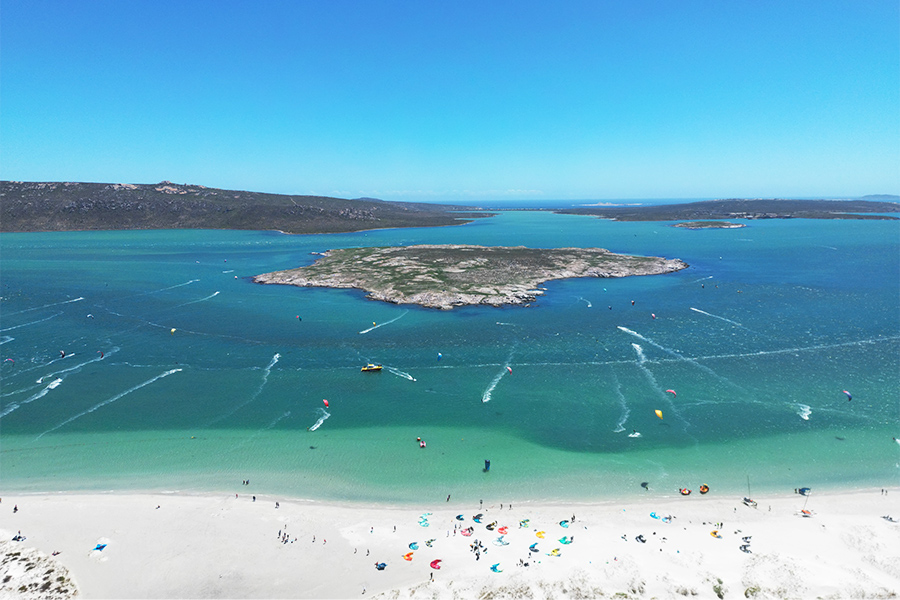
Kites laid out on the beach / Image: Windtown SA

Starting in November, the seasonal south-easterly winds come roaring in off the Atlantic, growing in strength through January and February. For tourists, it’s been known to spoil a day at the beach, but locals welcome the so-called ‘Cape Doctor’ for keeping the city air clear and gifting Table Mountain its signature tablecloth of cloud.
And for kite-surfers around the world, the promise of the south-easterlies is nothing less than a siren song to pack their bags, boards and kites and fly south.
“When it comes to kite-surfing you simply can’t compare Cape Town to anywhere else in the world. It’s just incredible,” enthuses Marcus Bull.
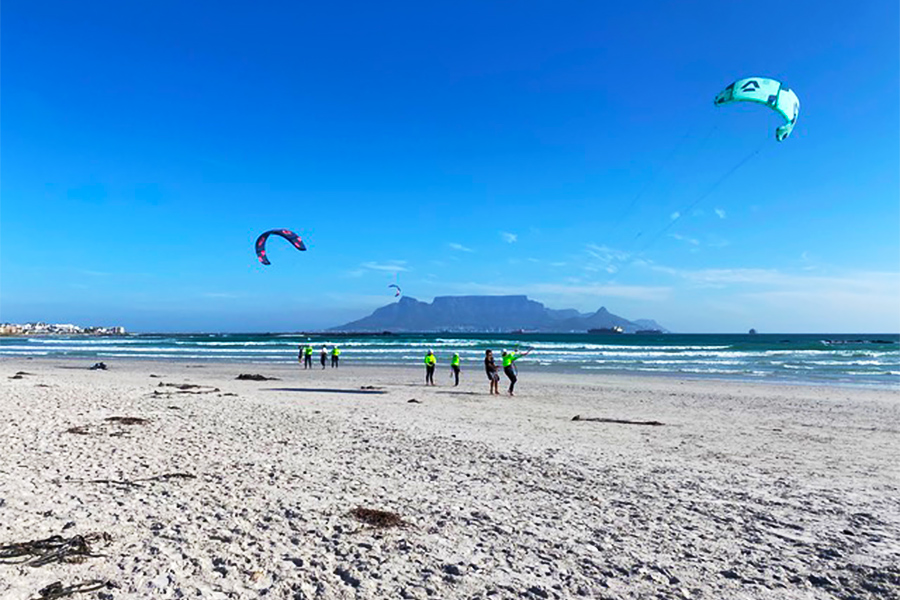
Testing out the conditions / Image: Peach on Beach/Coastline Kite

And he would know. Bull has been kite-surfing for more than 20 years and is the founder of Planet Kitesurf, the United Kingdom’s oldest and largest kite-surfing holiday company. He’s rigged his kite in destinations worldwide, but in the southern hemisphere summer, there are few locales that can beat the Cape.
“For kite-surfers who are really into the sport, and among pro-riders, Cape Town is the go-to place during the European winter,” says Bull. “There’s nowhere like it for wind reliability, punchy waves and the amazing atmosphere. It’s also cheap for Europeans and it’s got a great vibe.”
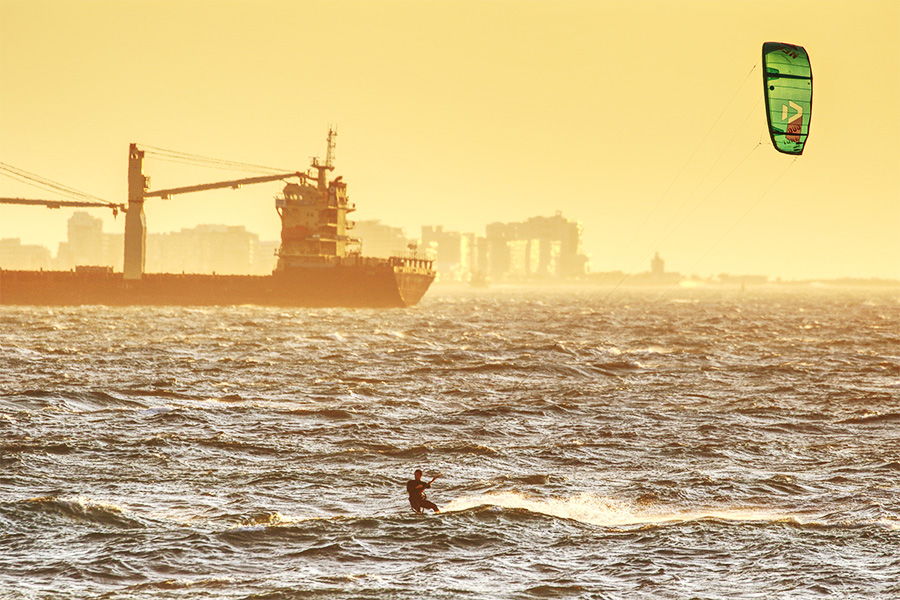
A kite-surfer off Sunset Beach / Image: KiteWorldWide

“Experienced kite-surfers who want to jump, they come for the Cape Doctor,” agrees Peter Troesch, owner of boutique kite-surfing school Coastline Kite. “But really, the city offers something for everybody. It combines kite-surfing with all the rest that Cape Town has to offer, whether in the city or the winelands.”
The heart of Cape Town’s kite-surfing scene is conveniently just 15 minutes from the city centre, on the coastal stretch reaching from Dolphin Beach and Table View north through to Blouberg and Melkbosstrand.
“Sunset Beach is one of the best kite spots for windsurfers and kite-surfers. It’s a medium-to-professional kind of spot where you have quite strong winds and decent waves,” explains Anne Valvatne, Head of Business Development for global kite-surfing tour operator Kite Worldwide, and a former professional kite-surfer. “It’s the place where everybody starts kiting in the day because it’s where the wind first hits the sea. But Sunset Beach can pick up to 35 knots in the afternoon, so then most kiters head down the coast for kite-surfing that’s a little more relaxed.”
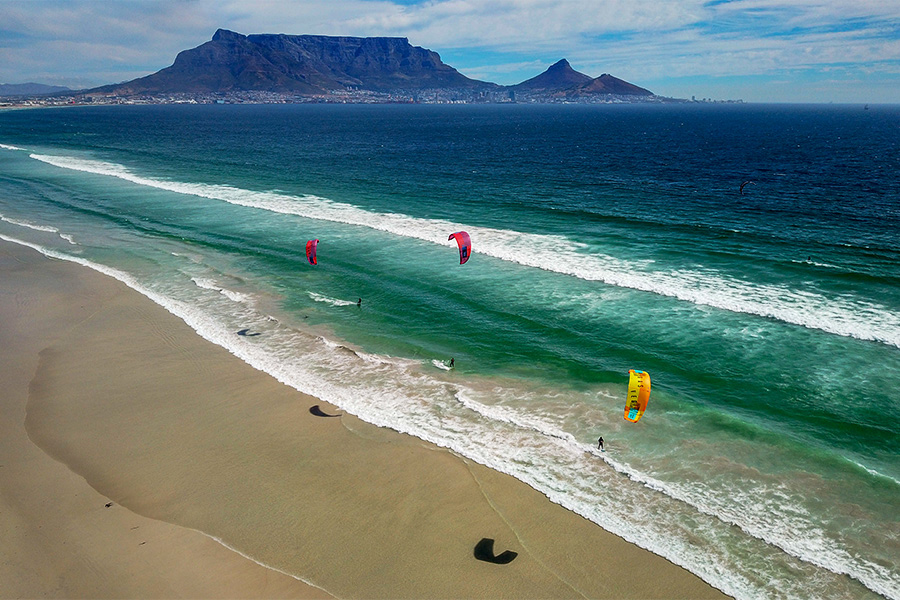
A cloud-topped Table Mountain providing a fine backdrop to a day of kite-surfing / Image: KiteWorldWide

A little further up the coast is the aptly named Kite Beach, in the suburb of Table View. While many visitors to Cape Town make the drive out here to snap the postcard shot of a cloud-topped Table Mountain across Table Bay, it’s not hard to see how Kite Beach earned its name. On any given summer’s day you’ll find dozens of multicoloured kites filling the air, their riders below racing up, over and through the punchy waves rolling in off the Atlantic.
And it’s little surprise that this world-class spot is the venue for the annual Red Bull King of the Air competition. Each November, 18 of the world’s leading kite-surfers compete to see who can harness the fierce summer winds and launch themselves highest into the air off a wave. The event is widely credited as the most important global competition driving progression in the sport of big air kite-boarding.
Just down from Kite Beach is Doodles, often the end-point for kite-surfers doing a downwind run, while those gybing (essentially using the wind to change direction) out past the rocks may kite further north towards Blouberg, Big Bay and Haakgat. Local tip: if you reach the nuclear power station at Koeberg you’ve gone too far, and are looking at a long walk – or upwind kite – to get back.
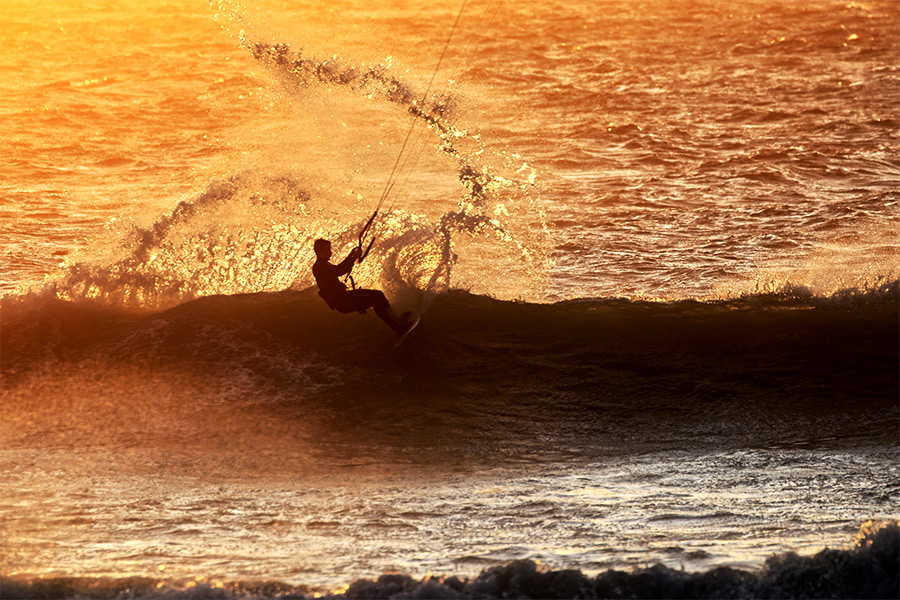
Pounding the waves off Sunset Beach / Image: KiteWorldWide

While the Sunset Beach to Melkbosstrand strip attracts competent kiters, the pounding waves and howling wind can be daunting for beginners. Other Western Cape destinations such as the Klein River Lagoon and Witsand, three hours from Cape Town, offer less intimidating conditions, but lack kite-surfing infrastructure and tend to attract capable independent kite-surfers.
The solution for those looking to learn? Drive an hour north of Cape Town to the laid-back town of Langebaan.
Here, the warm shallow waters of the Langebaan Lagoon – part of the West Coast National Park, a globally-protected wetland – offer ideal conditions for taking your first outing on a kite-board.
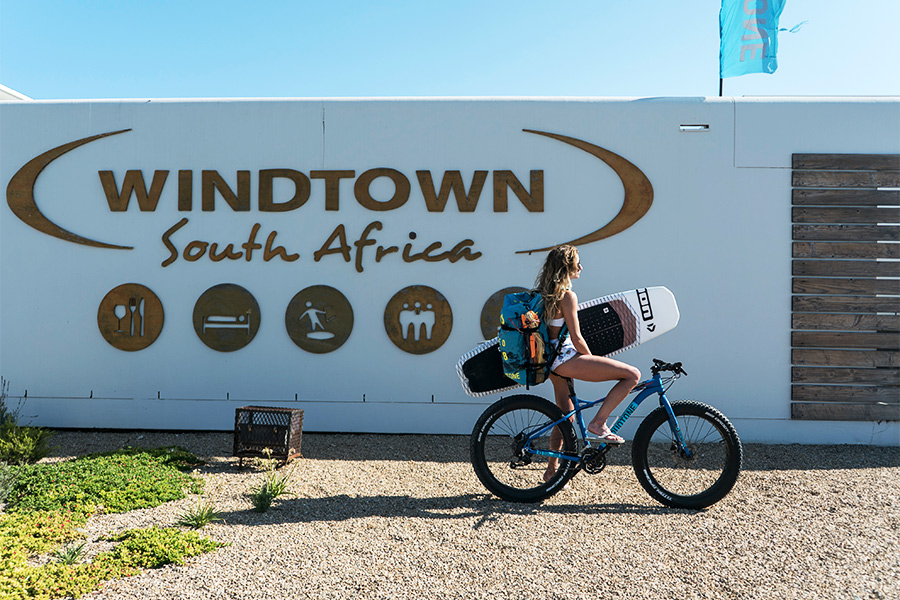
Hotel and kite school Windtown South Africa / Image: Windtown SA

“The Langebaan Lagoon is really one of the best places in the world to learn to kite surf,” explains Vicki Muylaert, General Manager of Windtown South Africa. This 28-room hotel and kite school – with an affiliated property in Brazil – was the first in Langebaan to be certified by the International Kiteboarding Organization and offers a range of residential courses led by qualified instructors.
Depending on fitness and agility, a ten-hour lesson package is usually enough for complete beginners to get up and riding, with lessons spread across three or four days. Coaching sessions range from safety, setup and piloting the kite to the basics of body-drags in the water, upwind kite control and water starts.
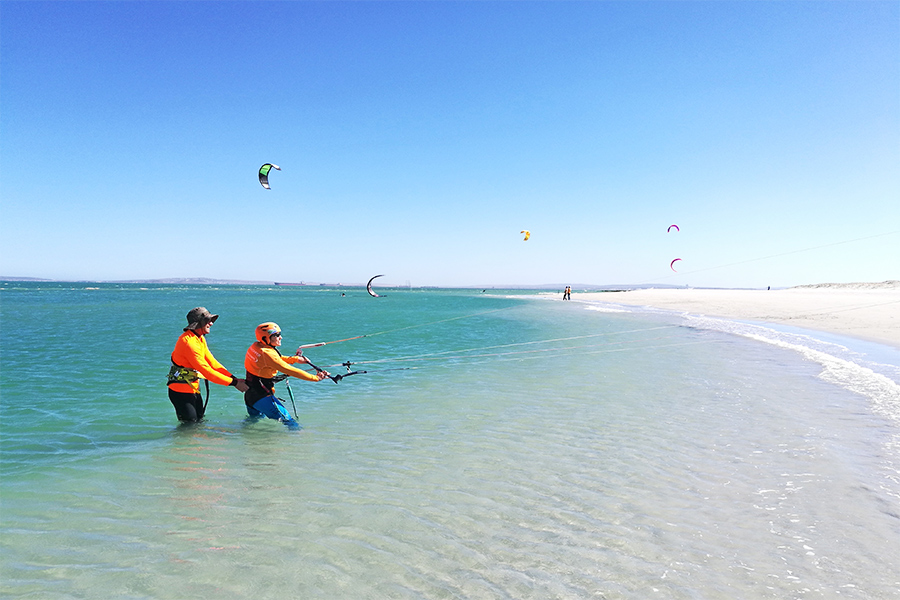
Line-taming in a kite-surfing lesson / Image: Windtown SA

Apart from providing a safe space for beginners, the lagoon also attracts competent kite-surfers who want to practise their gybing, turns and aerial tricks on one of the most beautiful stretches of water South Africa has to offer. Downwind runs from Shark Bay – don’t worry, it’s named for the harmless sand sharks found here – to the main beach at Langebaan are also popular.
“It’s a gentle downwinder and not very long, but it’s over the most beautiful turquoise water you can imagine. It’s just incredible,” says Muylaert.